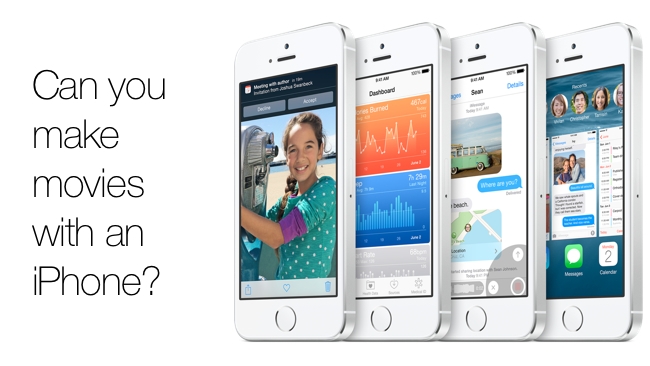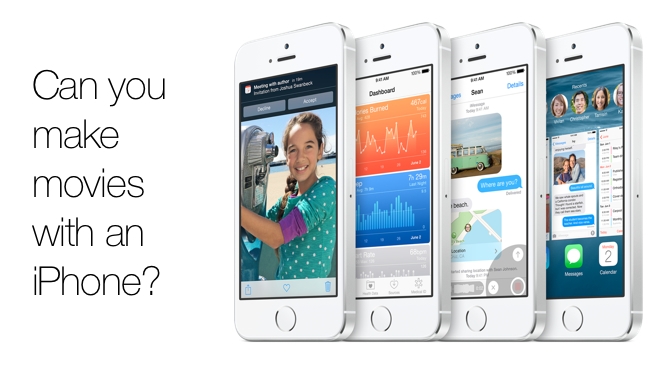
 Can you make movies with an iPhone
Can you make movies with an iPhone
It's beginning to look like film makers and journalists are taking the iPhone's video capabilities seriously
By Chris Erswell
A two year old RedShark News article entitled “Can you make a feature film with an iPhone?”, while acknowledging that the ability to shoot 1080p footage on a smartphone was a brilliant technological achievement, argued convincingly that what it lacked was high quality analogue optics which are not susceptible to miniturisation.
For example smartphone camera apps use digital zoom which degrades the picture quality in an unacceptable way.
At the time, this assessment was certainly true.
Things never stay still for long in the world of video technology
But as Redshark News has pointed out in many articles, things never stay still for long in the world of video technology. The pace of change is exponential. So how do things stand now two years later? A quick search of the Web for smartphone and tablet film making brings up a wealth of information about film projects using these devices and a growing array of film accessories and apps that have been created especially for them including optical lenses, lens adapters which enable smartphones to use standard high quality optical lenses, device grips like the Glyph, tripods, dollies and all the rest of the paraphernalia used in film making.
At least one full length 88 minute narrative feature film Uneasy Lies the Mind (Detention Films) has been made solely with the iPhone 5. See this video about the making of the film on this page:
See also this remarkable short film Apple of My Eye filmed with an iPhone 4 and the techniques and equipment used to make it:
The Filmic Pro app for the iPhone used in this film vastly improves on the capabilities of the default phone Apple app. See this video about it which also discusses the pros and cons of using iPads vs the iPhone for filming and also some of the specialist hardware filming accessories that are now available for these devices.
Part 1 on video apps and accessories:
Part 2 on audio accessories for the iPhone/iPad:
The one thing that smartphones have achieved is to make HD video available to literally billions of new people globally, many of whom would never have contemplated shooting videos without them. According to the International Data Corporation, over 1 billion smartphones were shipped globally in 2013 alone.
The pace of smartphone distribution is accelerating
And the pace of smartphone distribution is accelerating: Google's Larry Page recently revealed that 1.5 million Android devices (smartphones and tablets) are activated every day and that over 900 million have been activated since Android was released in 2008.
These billions of people globally suddenly find that HD video is possible for them for the first time--the user base for creating them has been vastly expanded beyond even the HDSLR explosion of recent years. These facts are not without social significance. It means that just about every news event or conflict in the world is recorded from multiple angles and uploaded to the Web almost instantaneously. The fact that smartphones can be carried around in a pocket by billions of people and be whipped out in an instant to film a news event is a new phenomenon. Combined with the Web, it has altered the news gathering landscape. It is not uncommon for mainstream media sites to ask for people to upload their smartphone footage which I think confirms this view.
For example, CNN's iReport community which allows registered citizen journalists to upload their footage had 750,00 members in 2011.
And that is just one TV news channel.
It is understandable, of course, that video pros might scoff at the amateurish, and often appallingly shot, footage uploaded by smartphone users that is evident on sites like YouTube and Vimeo. I often find myself yelling at them in frustration "for goodness sake, keep the #$%@# thing still!" when I watch violently shaky footage or "hosing and tromboning" (overly fast panning or zooming) on YouTube. There are thankfully some mainstream TV websites like the BBC that offer useful advice to smartphone camera users on how to improve their shooting techniques.
This is clearly a developing story. We'll keep our eye on it!
By Chris Erswell
Tags: Production



Comments